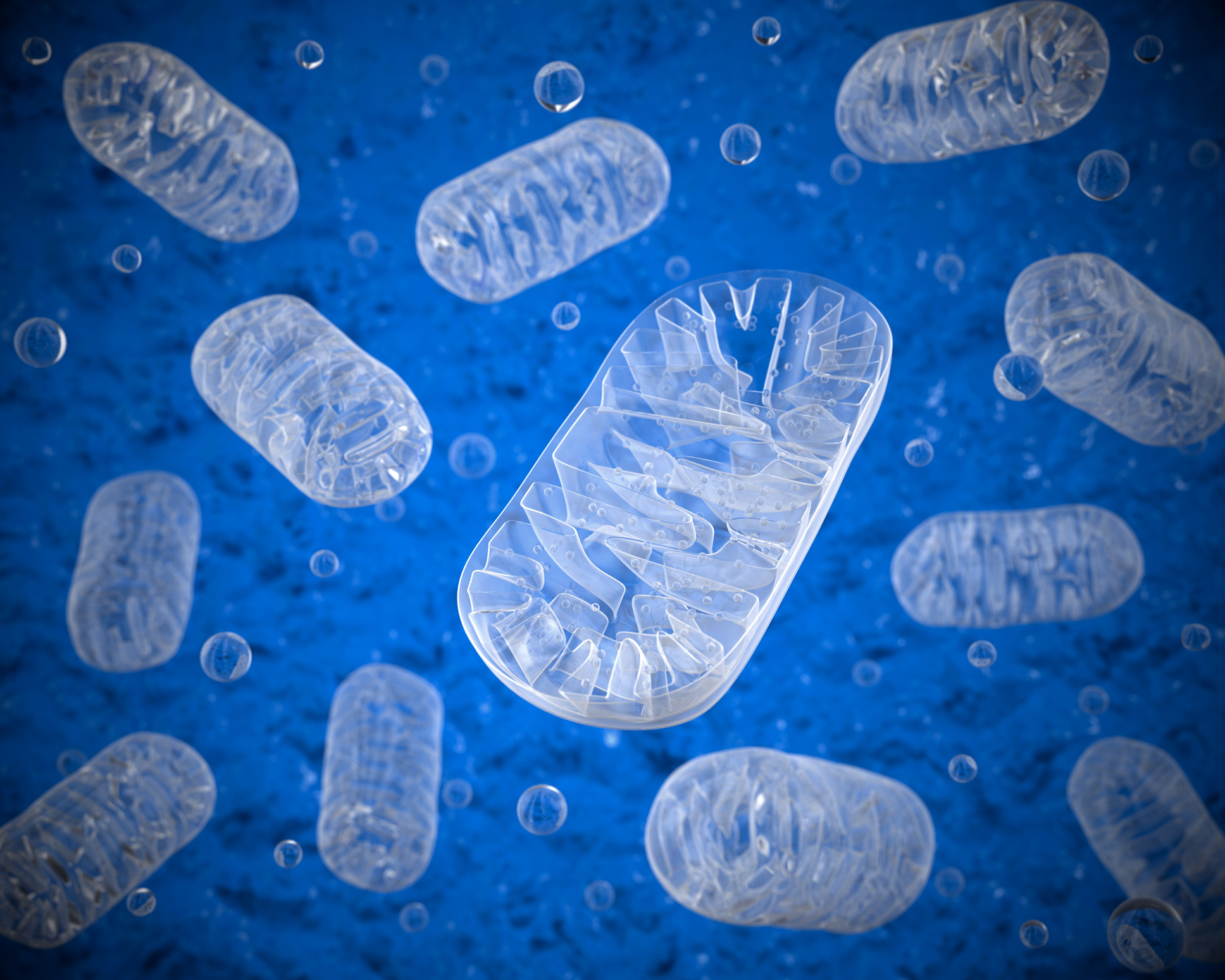No products in the cart.

In a previous blog, I explored different ways aging can impact our energy and mental acuity. In this blog update I’m taking a closer look the impact of aging on our mitochondria, and what we can do to keep them in good functional shape as we age.
As I explained previously, mitochondria supply over 90% of brain cell energy, so it’s easy to see why these little cellular organelles are so important to brain health. Our brain needs nutrients and oxygen to perform their vital functions, including providing high-energy molecules to nerve cells, maintaining calcium balance inside our cells, and important immune functions and other maintenance operations. If nerve cell mitochondria are damaged or cannot receive the necessary nutrients and oxygen, then all of the biological functions that involve the nervous system are impaired.
Also, our mitochondria sustain damage over time, and as we enter into the later stages of our lives those damaged mitochondria can no longer provide the energy necessary to maintain memory, cognition and brain health, compared to mitochondria at younger stages of our lives. This degradation of mitochondria can occur at different ages in different individuals, but in general, a 90-year-old person may have lost up to one-half of the mitochondrial function that they had as a young adult! This means that their brain functions can tire more easily and not be maintained, causing temporary confusion, memory loss and other problems. Exercise can help with this, because it stimulates the movement of oxygen and nutrients to the brain and ultimately to nerve cells in the brain, but exercise alone cannot make an old brain young again.
To heal this damage takes more than a brisk walk or the right food on your plate. But to understand why, you need to know a little bit more about the structure of mitochondria, and why it is important to routinely replace important parts of this structure.
Mitochondria are separated from the other parts of our cells by a surrounding outer membrane. This membrane forms a barrier with the interior of the cell (or cytoplasm) to keep nutrients inside and separate the energy-generating system found in an additional membrane system called the inner mitochondrial membrane from the rest of the cell. Basic research over the last approximately 50 years has found that the inner mitochondrial membranes are the critical structures in generating the high-energy molecules necessary to maintain brain function. This system must be undamaged to maintain the electrical/chemical gradient across the inner mitochondrial membrane, which is essential to produce the high-energy molecules that drive so many important cellular processes.
As we age, we suffer damage from highly reactive molecules called free radicals that are derived from mitochondria themselves and from other sources, and the inner mitochondrial membranes as well as other cellular membranes and even our genetic code (DNA) can become damaged. Among the most damage-sensitive molecules in our cells are the phospholipids in our membranes that naturally form a bilayer structure that is the matrix of the mitochondrial inner membrane and other membranes of each cell in our bodies. The damaged membrane phospholipids, especially those in our mitochondrial inner membranes, must be replaced continually to maintain the fluidity, structural integrity and activities of the membrane proteins as well as maintaining its trans-membrane electrical/chemical gradient. This is why proper nutrition for our mitochondria is so important during aging and to maintain our health.
What is the solution? Provide undamaged, essential nutritional membrane phospholipids in our diets or as nutritional supplements so that as we age our mitochondrial membranes can be repaired and can maintain their proper functions. It sounds simple enough, but unfortunately those membrane phospholipids are themselves very sensitive to environmental damage, so many of the membrane phospholipids that we would obtain in our normal diets are already damaged by the time that they arrive in our brain. Most diets and nutritional supplements do not provide some of the essential membrane phospholipids as undamaged molecules, so the process of replacing damaged membrane molecules by diet alone can’t occur at rates necessary to maintain brain mitochondrial function at peak performance.
At NTI, we have developed a proprietary nutritional or food supplement that provides just the correct mixture of protected, essential mitochondrial membrane phospholipids to help repair the damage to mitochondria that occurs during aging and with health problems. This all-natural supplement is called NTFactor® Lipids, and it forms the basis of all of the NTI products. Best of all, it has been matched to the inner mitochondrial membrane composition and is protected from damage during storage and ingestion that occurs because of the harmful effects of oxidation. (Learn more here!)
I take this product daily myself, because I believe in its effectiveness in helping older folks like me to improve their brain health and general health. I don’t think that there is anything better that you can do for your brain health than eating properly, getting enough exercise, stimulating your brain, staying social, and taking daily vitamins and a mitochondrial nutritional supplement like NTFactor® Lipids. In my next update I will discuss some other important reasons to take daily a Membrane Lipid Replacement supplement like NTFactor® Lipids.
Prof. Emeritus Garth Nicolson, PhD, MD (H)
The Institute for Molecular Medicine
Huntington Beach, California
References:
Nicolson GL. Membrane Lipid Replacement—a functional approach to repairing cellular membranes, reducing symptoms, and restoring function. Functional Food Science 2022; 2(8): 198-204.
https://doi.org/10.31989/ffs.v2i8.990
Nicolson GL, Ferreira de Mattos G, Settineri R, Breeding PC. Membrane Lipid Replacement and its role in restoring mitochondrial membrane function and reducing symptoms in aging and age-related clinical conditions. Nature Cell Science 2024; 2(4): 238-256.
https://doi.org/10.61474/ncs.2024.00038

